Madeleine Albright on Her Life in Pins
In 2010, the former secretary of state reflected on her famous collection of brooches and pins
:focal(1757x1220:1758x1221)/https://tf-cmsv2-smithsonianmag-media.s3.amazonaws.com/filer_public/ce/28/ce28bd44-e617-4fe3-a901-768a130d586e/gettyimages-576836018.jpg)
Throughout her diplomatic career, former Secretary of State Madeleine Albright used pins to express her moods and opinions. Read My Pins: The Madeleine Albright Collection, an exhibition featuring over 200 of her brooches, opened this month at the Smithsonian Castle. Secretary Albright spoke with the magazine’s Megan Gambino.
What does the collection say about you, Madeleine Albright?
I hope that it says that I have a good sense of humor. Most of the pins are costume jewelry and are supposed to be reflective of whatever issue we’re dealing with or what I’m feeling like on a given day or where I’m going. But mostly it’s fun. It’s just a good way to get started.
When did you first use jewelry as a diplomatic accessory?
It all began when I was at the United Nations. It was right after the Gulf War and the United States was pressing for resolutions sanctioning Iraq. During that time I had something dreadful to say about Saddam Hussein on a daily basis, which he deserved because he had invaded Kuwait. The government-controlled Iraqi media then compared me to an “unparalleled serpent.” I happened to have a snake pin, and wore it to my next meeting on Iraq. When the press asked me about it, I thought, “Well, this is fun.” I was the only woman on the Security Council, and I decided to get some more costume jewelry. On good days, I wore flowers and butterflies and balloons, and on bad days, all kinds of bugs and carnivorous animals. I saw it as an additional way of expressing what I was saying, a visual way to deliver a message.
What other messages did you deliver?
I had an arrow pin that looked like a missile, and when we were negotiating the Anti-Ballistic Missile Treaty with the Russians, the Russian foreign minister asked, “Is that one of your missile interceptors you’re wearing?” And I responded, “Yes. We make them very small. Let’s negotiate.” Or, after we found that the Russians had planted a listening device—a “bug”—into a conference room near my office in the State Department, the next time I saw the Russians, I wore this huge bug. They got the message.
So non-verbal communication is one of your diplomatic tactics?
Yes, it’s complementary to the verbal. It’s an icebreaker, an opener.
You were often humorous and playful in your pin choices.
In order to get through a lot of complicated issues, it helps to have a little bit of humor. We were in talks with Syria and Israeli, which was very complicated, and the reporters wanted to know what was going on. I said to them, “sometimes talks, like mushrooms, do better in the dark for a little while.” So then, whenever someone from the press asked what was going on, I would just say, “mushrooms, mushrooms.” Then, I found a mushroom pin. And I was just able to point to the pin.
What pin are you wearing today?
I’ve got one that is very suitable for this interview. It is a picture frame, as you would find in a museum, and inside it says, “out on loan.” Because most of my pins actually are on loan, first to the Museum of Arts and Design and then to Clinton Library, and now they are at the Smithsonian.
I know that your pins range from antiques to dime-store baubles. If you had to pick a favorite, which would it be, and why?
My favorite is truly something that doesn’t fit into either of those categories. It is a heart that my daughter made for me that I will always wear on Valentine’s Day (except this Valentine’s, because it is in the museum). I wear it, and people ask me where I got it. I say, well, my daughter made it. They always ask, “How old is your daughter?” Until my daughter finally said, “Mom, you have got to tell people that I made it when I was five years old.” This Valentine’s Day, my granddaughter made me a pin of two, little hearts because she knew that her mother’s heart was in the exhibit. “This is a replacement heart,” she said.
You talk about getting pins as gifts. But how else did you go about collecting them?
I love to go to flea markets and things like that. I love to go to antique shops out in the country. Some pin speaks to me, and so I have to buy it. Then we find a purpose. Mostly, they just kind of happen. I try very hard when I go to speak at a college or university to wear whatever their mascot is. I went, three weeks ago, to Butler, and their mascot is a bulldog. I didn’t have a bulldog, so the students there gave me a bulldog. I think I just cheated yesterday. I went to the University of Michigan. Their mascot is a wolverine, but I only had something that I actually think is a fox. But I said it was a wolverine. There was a time that [Slobodan] Milosevic called me a goat. The only goat pin that I had was the [Naval Academy’s] mascot.
A lot of my pins are truly very simple costume jewelry. I buy them in souvenir shops. People do give them to me. It’s a very eclectic collection. The reason that I think my pin book, Read My Pins, and the whole concept have been popular is that everybody can do this. I have some beautiful pins, but mostly they are things that I picked up for nothing. In fact, for my 65th birthday, someone who works with me went out and bought 65 pins, each cost less than five dollars.
Did a pin ever land you in hot water?
Definitely. When I went to Russia with President Bill Clinton for a summit, I wore a pin with the hear-no-evil, see-no-evil, speak-no evil monkeys, because the Russians never would talk about what was really going on during their conflict with Chechnya. President Vladimir Putin asked why I was wearing those monkeys. I said, because of your Chechnya policy. He was not amused. I probably went too far.
/https://tf-cmsv2-smithsonianmag-media.s3.amazonaws.com/accounts/headshot/megan.png)
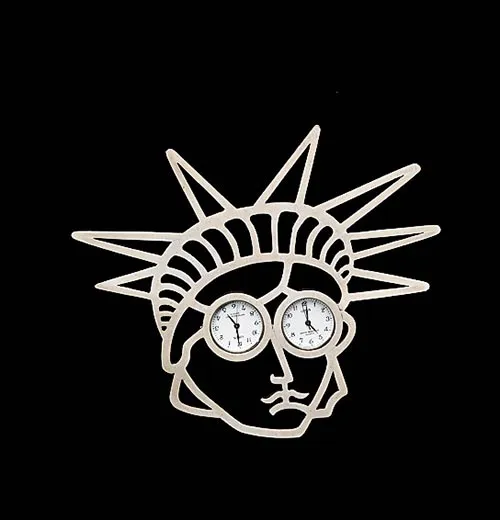
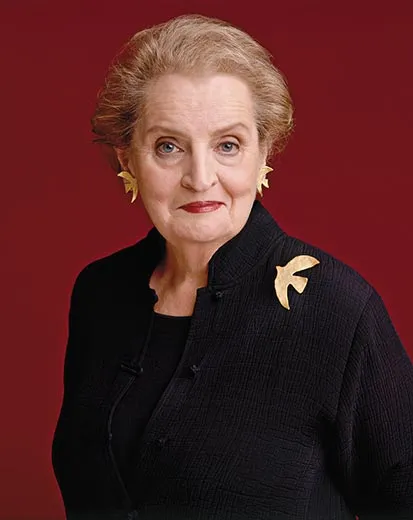
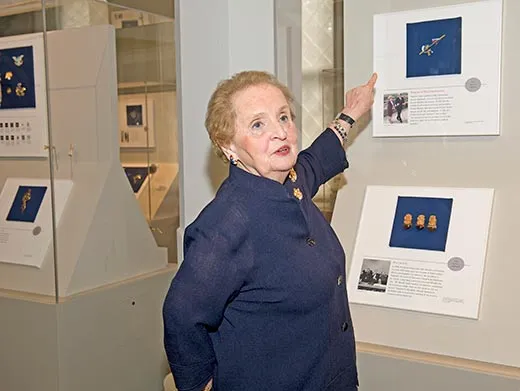
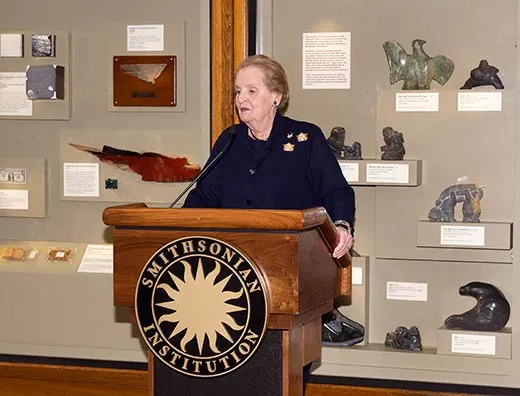
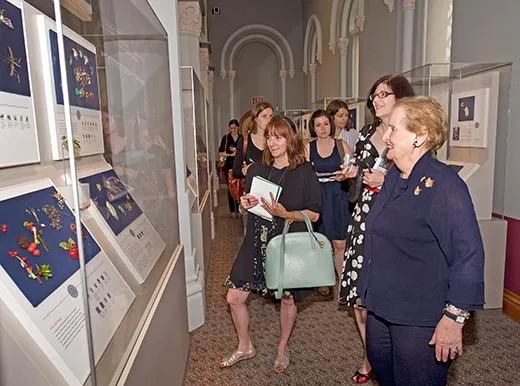
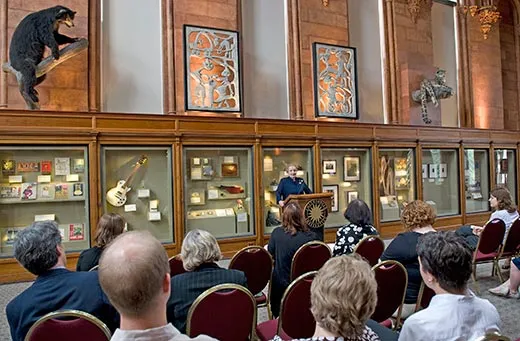
/https://tf-cmsv2-smithsonianmag-media.s3.amazonaws.com/accounts/headshot/megan.png)